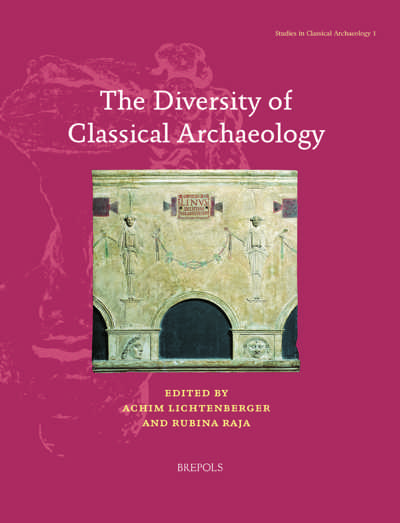
- Pages: xii + 172 p.
- Size:216 x 280 mm
- Illustrations:73 b/w, 1 col., 1 tables b/w.
- Language(s):English
- Publication Year:2020
- € 90,00 EXCL. VAT RETAIL PRICE
- ISBN: 978-2-503-58461-4
- Paperback
- Available
The focus of this book will be on actors and actions in public urban spaces.
Annette Haug is professor of Classical Archaeology at Kiel University, she was Co-Coordinator of the Kiel Graduate School ‘Human Development in Landscapes’ (2015-2018), Co-Speaker of the Excellence Cluster ‘Roots’ (2016-2018) and is currently the Principle Investigator of her ERC Consolidator Grant ‘DECOR’.
Stephanie Merten is a PhD student of Classical Archaeology at Kiel University, member of the Kiel Graduate School ‘Human Development in Landscapes’, research assistant in the Erasmus+ Strategic Partnership ‘Ancient Cities’ and a member of the editorial staff for the Freiburg CRC ‘Helden. Heroisierungen. Heroismen’.
Cities in the ancient world, much like in the modern era, were not simply a locus for population and a hub for social, cultural, and economic activity, but were themselves the products of urban practices. This volume draws together two often disparate fields — urban space and human practice — to explore the actors and actions that underpinned ancient cities and to offer unique insights into the lives of those who dwelt there. Placing particular emphasis on social practice theory, the contributions gathered together in this book seek to analyse the development of the city, especially public urban spaces, from the archaic period up to Roman Imperial times. A key focus is on infrastructure, public spaces used for politics (particularly the Forum Romanum), and the role of sanctuaries and the way in which they were shaped by cult activity. Through this unique approach, this volume is able, for the first time, to bring the inhabitants of ancient cities to the fore, and in doing so, to offer key insights into the development of spatial routines, the interaction of these routines with the material setting of a city, and the way in which cities themselves played an important role in shaping the people and practices within them.
Preface
Introduction — ANNETTE HAUG
De-centralised Decision-Making Processes in Third-Millennium Syro-Mesopotamian City-Planning: The Example of Tell Chuera — HENRIKE BACKHAUS AND TOBIAS HELMS
City and Shore: Natural Change and Human Action — STEFAN FEUSER
Streetscapes and Traffic at Selinous from the Archaic City to the Punic-Hellenistic Settlement — NICOLA CHIARENZA
Performing Commerce: Everyday Work and Urban Life in Roman Italy — MIKO FLOHR
The Production of Diplomatic Space in Ancient Rome — HANNAH CORNWELL
The forum Romanum as an Active Action Context — DUNIA FILIPPI
Places of Gods and Men: Socio-Political Interactions and Ritual Practice in the Etruscan Sacred Landscape (Eighth to Fifth Centuries BC) — ROBINSON PETER KRÄMER
The Appropriation of Space in the Sanctuary of Poseidon at Isthmia — SARAH HERZOG
Hellenistic Built Space and Human Action: The Asclepieion of Cos — ASJA MÜLLER
Indices




